Transfer Contacts from Android to iPhone: Complete Guide
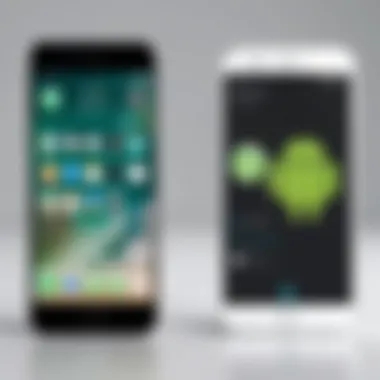
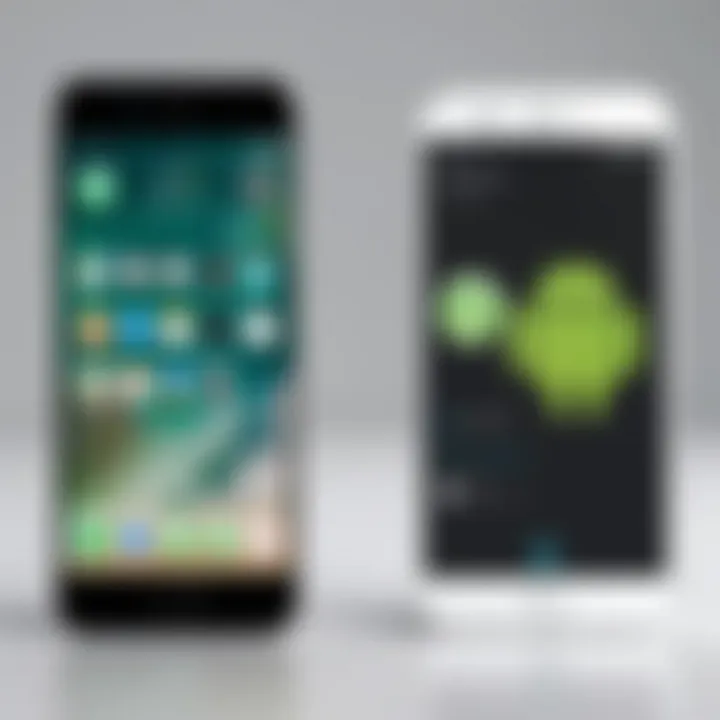
Product Overview
Transitioning from an Android device to an iPhone can bring about a range of challenges, particularly in the realm of contact management. When you switch platforms, preserving your important contacts is essential. This guide provides a comprehensive approach to seamlessly transfer contacts without losing any vital information.
The two primary methods for moving contacts include using built-in services offered by Google and Apple's iCloud, as well as exploring third-party applications. Each method has unique features, making it crucial to select the one that best meets your needs. The guide simplifies the process, ensuring that tech-savvy individuals can complete the transfer efficiently.
Performance and User Experience
In terms of performance, the built-in services like Google Account sync offer a straightforward way to manage contacts across both platforms. By linking your Android device to your Google account, you can easily sync contacts to your iPhone. Users have reported a smooth transition, with minimal disruptions.
When using iCloud, the experience is similarly user-friendly. Syncing is done in a few clicks and does not require extensive technical knowledge. Comparatively, third-party applications such as Move to iOS can also facilitate the transfer but may require additional steps. Evaluating these various methods is key to achieving a hassle-free experience.
Design and Build Quality
While the focus of this guide is not on specific devices, the design and build quality of both Android and iPhone devices can influence user experience. Apple's iPhone is known for its sleek design and high durability. However, the transfer methods themselves do not heavily rely on physical design; they are largely dependent on software functionality.
Technology and Innovation
The process of transferring contacts highlights significant advancements in mobile technology. Built-in services leverage cloud storage and synchronization, which are industry standards. Moreover, Apple's emphasis on privacy ensures that user data remains secure during the transition, accentuating the importance of utilizing trusted technologies.
Future trends may bring more integration between platforms, potentially simplifying the process even further. As relationships evolve in mobile technology, it is essential to stay informed on updates that can enhance user experience during transitions like these.
Pricing and Value Proposition
One of the primary advantages of transferring contacts is its cost-efficiency. Most methods mentioned in this guide are free of charge. For individuals moving from Android to iPhone, the value of being able to retain contact information without incurring additional expenses is significant. This aspect makes these techniques attractive options, especially when compared to paid software solutions.
Understanding the Need for Contact Transfer
In today's digital age, the ability to transfer contacts between devices is pivotal. Whether one is upgrading to a new phone or switching operating systems entirely, maintaining access to essential contact information remains a priority. Any disruption in contact access can lead to confusion, missed opportunities, and overall disorganization.
Migrating contacts from an Android device to an iPhone is a situation many face. With different ecosystems, the transfer process can seem daunting. However, understanding the importance of this transition can clarify its necessity.
For professionals, having a complete and intact contact list can be crucial for networking. Hence, seamless transfer ensures that vital connections are not lost. Furthermore, casual users would not want to duplicate any effort when reaching out to friends or family after such a migration. Having one’s contacts readily available on the new device simplifies communication and enhances user experience.
"The ability to quickly transition contacts from one platform to another is not just convenient; it keeps vital connections intact."
Thus, understanding the need for contact transfer emphasizes accuracy, efficiency, and practicality. It sets the stage for exploring methods and tools that can facilitate this process, leaving no important contact behind.
Why Migrate Contacts?
Migrating contacts is essential for various reasons. First, there is practical significance in preserving a user’s network. Moving to an iPhone may introduce superior features and capabilities. However, without contacts, individuals risk missing out on utilizing those features effectively.
Moreover, simplifying the transition allows users to acclimate more rapidly to the new environment. Users often invest considerable effort in organizing their contacts. When shifting devices, it is vital to maintain that structured setup without starting from scratch.
On the administrative side, forgetting or losing contact information can cause professional setbacks. Incorrect or missing details may hinder one's ability to perform necessary functions, such as scheduling meetings or following up on important discussions. Hence, the migration must be completed seamlessly for optimal functionality.
Common Challenges Faced
While the need for contact transfer is clear, various challenges can arise during the process. A frequent issue is compatibility between platforms. Android uses Google services primarily, while iPhone relies on iCloud. This difference can lead to potential synchronization problems.
Another struggle often faced is data integrity. Some users experience incomplete transfers, where only a portion of the contacts are successfully migrated. This can lead to confusion and the risk of losing important connections.
Technical issues like network stability can further complicate the transfer process. Whether through Wi-Fi or cellular data, an unstable connection can disrupt the transfer at any point, leaving users frustrated.
Preparing for the Transfer
Transferring contacts from an Android device to an iPhone requires careful preparation. This stage is crucial to ensure that the transition is smooth and all important contacts are preserved. The two devices run on different operating systems, therefore understanding how to prepare is essential to avoid any data loss or technical issues. This section will discuss important elements such as backing up your Android contacts and configuring iCloud properly. Both elements are necessary for a successful transfer.
Backing Up Your Android Contacts
Backing up your Android contacts is inportant. Even if you believe that you have everything synced properly, accidents can happen. A backup acts as a safety net. You can use Google Contacts, which automatically syncs your contacts to your Gmail account. If you don't want to rely on Google, you can also export contacts manually. This way, you can have a separate file of your contacts saved locally. To back up, follow these steps:
- Open the Contacts app on your Android device.
- Tap on the Menu icon (often three dots).
- Select Import/Export options.
- Choose Export to storage to save contacts as a VCF file.
- Ensure that the VCF file is stored safely, either in cloud storage or a reachable location.
This process ensures that even if the transfer fails, your contacts are safely stored.
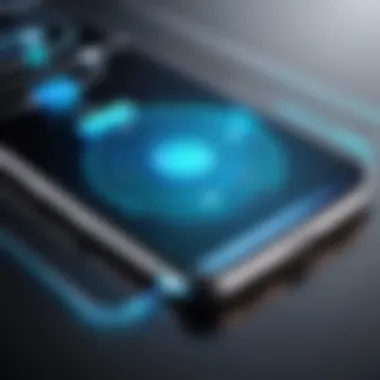

Ensuring iCloud Configuration
Next, proper configuration of iCloud is also essential before beginning the transfer process. If you want to use the iCloud method for importing contacts, you must have an iCloud account set up. Here’s how you can ensure it's configured correctly:
- Create or sign into your iCloud account. Open the Settings app on your iPhone, tap your name at the top, and select iCloud.
- Turn on Contacts. Make sure the Contacts toggle is activated. This allows your iPhone to sync contacts with iCloud.
- Verify iCloud storage. Check if you have enough storage in your iCloud account. Insufficient space can hinder the process of importing contacts.
When iCloud is properly set up, it becomes a reliable method to transfer contacts and maintain them over time. By ensuring that iCloud is ready, you lessen the risk of encountering problems during the transfer, ensuring that your contacts can be synced seamlessly into your new iPhone.
Using Google Account for Transfer
Transferring contacts from an Android device to an iPhone can be quite the undertaking, but using a Google account simplifies this process significantly. The integration of your contacts with Google allows for a streamlined approach rather than grappling with various methods that may not yield satisfactory results. Utilizing this avenue not only ensures that your contact data is accessible across devices but also safeguards your information within the Google ecosystem. The process affords a reliable backup, reducing the risk of losing crucial contact details.
Syncing Contacts with Google
To begin, it is essential to ensure that all your contacts on the Android device are synced with your Google account. Here’s how to do it:
- Open Settings on your Android device.
- Locate Accounts or Users & Accounts.
- Select your Google account. You may need to log in if you haven’t done so.
- Navigate to Account Sync. Here, ensure that the Contacts option is enabled. If it is not, toggle the option on.
This step is pivotal since it guarantees that all contacts on your Android device are available in your Google account. The sync may take a few moments. If you have many contacts, it can take longer. Once it’s complete, you can check your Google contacts at contacts.google.com. Having them stored here prepares them for a smooth transition to your new iPhone.
Adding Google Account to iPhone
Once you’ve ensured that your contacts are synced with Google, the next step is to add the Google account to your iPhone. This operation allows the iPhone to access your contacts directly from the Google server.
Follow these steps:
- Open Settings on your iPhone.
- Scroll down and select Mail.
- Tap on Accounts.
- Choose Add Account, followed by Google.
- Log in to your Google account. You might have to verify your identity through two-factor authentication if you have it enabled.
- Once logged in, ensure that the toggle next to Contacts is activated. This will allow your iPhone to fetch contacts from your Google account.
After completing this process, you will find your Android contacts seamlessly available on your iPhone. This method not only simplifies the transition but also helps maintain an organized and unified contact list moving forward.
Using a Google account ensures that you have a backup of your contacts, reducing the fear of data loss and enhancing overall data integrity.
Utilizing Apple's Move to iOS Application
The transition from an Android device to an iPhone can be both exciting and daunting. One of the essential tools that Apple provides to facilitate this migration is the Move to iOS application. This tool simplifies the process of transferring contacts among other important data, streamlining the transition for users who may be unfamiliar with how to transfer data between different ecosystems. By utilizing this application, users can significantly reduce the complexity and potential for errors often associated with manual transfers.
In essence, the Move to iOS app serves two primary functions: it connects the old Android device to the new iPhone via a secure private Wi-Fi network, and it automatically transfers essential data including contacts, message history, photos, videos, web bookmarks, mail accounts, and calendars. This reduces the time and effort required to set up the new device, allowing users to start using their iPhone with minimal hassle.
Installation and Setup
To get started with the Move to iOS application, the installation process is straightforward. It is essential that the Android device runs version 4.0 or above, as this is the minimum required to use the app.
- Download the App: On your Android device, visit the Google Play Store and search for Move to iOS. Download and install the application.
- Start Setup on iPhone: Begin setting up your new iPhone. When you reach the Apps & Data screen, select Move Data from Android. This initiates the connection process between your devices.
- Open Move to iOS on Android: Launch the Move to iOS app on your Android device and tap Continue. You will need to agree to the terms and conditions presented.
- Enter the Code: Your iPhone will display a code. Enter this code on your Android device to form the connection.
- Connect to Wi-Fi: The two devices will connect via a private Wi-Fi network created by the iPhone. Follow any prompts to establish this connection.
By following these simple steps, users can set up the Move to iOS application and prepare for the smooth transfer of their contacts and other data.
Transferring Contacts via Move to iOS
Once the devices are connected, the process of transferring contacts becomes quite seamless. Upon establishing the link, the Move to iOS application presents a selection screen showcasing various types of data that can be transferred.
- Select Contacts: Ensure that the option for Contacts is selected, along with any other data you wish to transfer.
- Start Transfer: With your selection made, tap Next on your Android device. The transfer process will begin and the duration will depend on the volume of data being moved. This step usually takes only a few minutes.
- Completion Message: Once the transfer is complete, a message will confirm that the process was successful. You can then disconnect both devices and begin using your new iPhone with its freshly imported contacts.
Utilizing the Move to iOS application not only simplifies the data transfer process but also enhances user confidence in switching platforms.
Manual Transfer Methods
Manual transfer methods hold significant importance when transitioning contacts from an Android device to an iPhone. These techniques become essential, especially for those who prefer a hands-on approach or wish to avoid reliance on third-party apps. The benefits of manual transfer include complete control over the process and enhanced privacy, as no external applications will access your contact data. In a world where data security is paramount, manual methods offer reassurance by keeping sensitive information within your devices.
However, manual methods demand a higher level of detail and care. Users need to be methodical to ensure that no contacts are missed during the process. Thus, understanding the steps involved in exporting contacts from Android and importing them into an iPhone is critical.
Exporting Contacts from Android
To begin, exporting contacts from an Android device is a straightforward task that typically involves the device's native contact app. First, locate the contacts application on your device. Depending on your Android version, the following steps may vary slightly, but the general process remains consistent.
- Open the Contacts app.
- Tap on the icon (three vertical dots or lines).
- Select Export or Manage Contacts, and then tap Export to Storage or Export to VCF file.

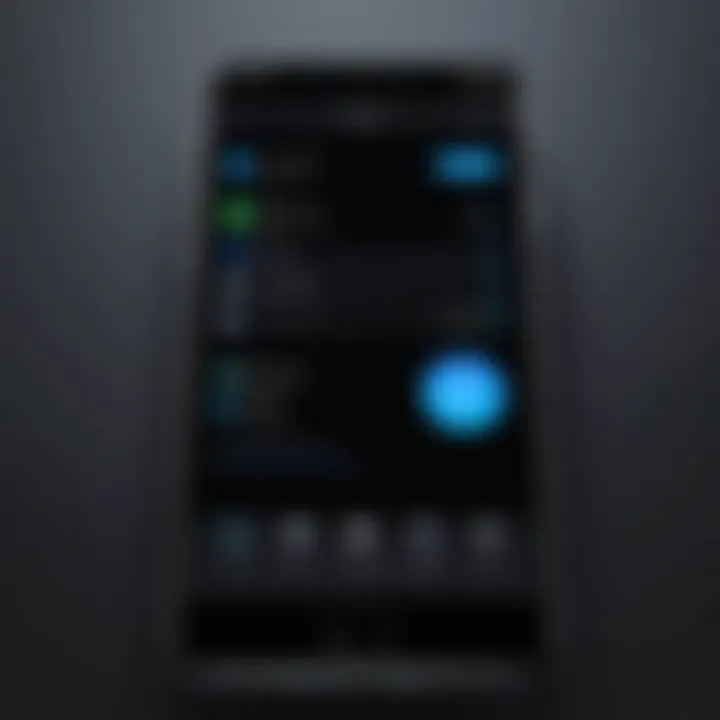
This process generally saves your contacts in a file format, which is widely accepted. It is advisable to keep a backup of this file in a secure location like an SD card or cloud storage. This backup ensures you will not lose your contacts if there are unforeseen issues during the transfer.
Importing Contacts to iPhone
The next step involves importing the contacts into your iPhone. This process requires access to the exported file. Below is a simplified method to accomplish this:
- Transfer the file to your iPhone via email or upload it to a cloud service that you can access from your iPhone, such as Google Drive or iCloud.
- Open the mail app or cloud service on your iPhone and locate the file.
- Tap the file; your iPhone will recognize it and prompt you to add the contacts.
- Follow the on-screen instructions to complete the import.
It is vital to check after importing that all contacts have successfully transferred without loss of data. This method may take a little time but can prove effective for those wary of using other applications.
Third-Party Applications for Contact Transfer
The transition from Android to iPhone often requires the migration of contacts. While various built-in methods exist, third-party applications provide a robust alternative. These apps can simplify the process significantly. They offer flexibility and additional features that may not be present in standard methods. This section outlines the importance of these applications, explores the available options, and assesses their security aspects.
Overview of Available Apps
Various third-party applications can facilitate the transfer of contacts between devices. Here are some notable options:
- Shareit: Known for file transfers, it also supports contact migration.
- Contacts+: Offers advanced features, such as group management and cloud backup.
- My Contacts Backup: This app allows users to back up and transfer contacts via email.
- Copy My Data: Utilizes Wi-Fi to allow easy transfer of contacts and more.
- Syncios: A comprehensive mobile management tool that ensures contact import/export.
These apps typically offer user-friendly interfaces. They enhance the overall user experience while ensuring that the information is moved effectively. Many users find these applications to be faster than traditional methods.
Evaluating Security and Privacy
When using third-party applications, security and privacy must be a priority. Users are often concerned about how their personal data is handled. Here are some considerations:
- Data Encryption: Ensure that the app uses encryption for data transfer. This helps protect contacts during the migration process.
- User Reviews and Reputation: Research the application's reputation by reading user reviews. Trusted applications often have positive feedback on platforms such as Reddit or technical blogs.
- App Permissions: Check the permissions requested by the app. If an app asks for unnecessary access, it may raise a red flag.
- Privacy Policy: Review the privacy policy to see how your data is used. Look for transparency regarding data handling practices.
It is essential to be cautious while choosing third-party applications for contact transfer, as security breaches can lead to unauthorized access to personal information.
In summary, third-party applications for contact transfer can be valuable tools. They offer specific advantages that traditional methods may lack. However, it is crucial to choose these tools wisely, taking into account their security features and user reviews.
Comparative Analysis of Techniques
Transferring contacts from an Android device to an iPhone can be a multifaceted process, depending on the approach one chooses. This section delves into various methods, highlighting their speed, efficiency, data integrity, and accuracy. Understanding these techniques is essential for users who value their contact information and wish to ensure a seamless transition. Each method offers unique benefits and considerations, making it crucial to analyze them based on individual needs.
Speed and Efficiency
Speed and efficiency are vital factors when transferring contacts. Different methods vary significantly in terms of the time they require. For instance, using built-in services like syncing through a Google account may allow for a quicker, almost instantaneous transfer. In contrast, manual methods can take longer, involving several steps, especially if users need to format or organize their contact lists beforehand.
Moreover, utilizing third-party applications like My Contacts Backup can provide an efficient solution as well. These apps, designed specifically for contact transfer, streamline the process and often include features like batch processing, which saves time when moving large numbers of contacts.
However, while speed is essential, users should also consider the scenario in which they are conducting the transfer. A slower process may afford more time for checking the accuracy of data being moved. In situations where thoroughness is paramount, sacrificing speed for careful verification might be wise. This duality highlights the importance of matching the method with the user's context.
Data Integrity and Accuracy
Data integrity and accuracy are non-negotiable aspects of contact transfer. This ensures that all information, including names, phone numbers, emails, and addresses, remain intact and unaltered. When analyzing techniques, one must consider how different approaches handle potential data loss.
For example, cloud-based solutions such as Google account syncing or iCloud provide a reliable way to maintain data integrity. The backup features these services offer enhance the safeguarding of contact information during transit. Conversely, manual export and import methods may lead to potential errors or omissions if not executed correctly. A minor oversight can result in missing contacts or incorrect details, compromising communication effectiveness.
Additionally, some third-party applications may lack transparency regarding how they manage data. It is crucial to choose a reputable app, as not all of them guarantee the same level of data accuracy. Researching user reviews and understanding how different applications manage contacts can help mitigate risks associated with data integrity.
In summary, a careful comparative analysis of the available techniques for contact transfer reveals the various strengths and weaknesses inherent to each approach. Evaluating speed and efficiency against data integrity and accuracy is fundamental for users who wish to maintain a streamlined contact list during their transition from Android to iPhone.
Post Transfer: Validating the Contacts
After completing the transfer of contacts from Android to iPhone, validating the integrity of the data is a crucial step. This process ensures that all contacts have been transferred accurately and remains essential for maintaining effective communication. A validated list not only prevents confusion but also increases efficiency in managing contacts on new devices. Users may experience issues if their contacts are incomplete or duplicated; thus, proper validation prevents future complications.
Checking for Duplicates
During the migration process, duplications can unintentionally occur. Checking for duplicates is vital because having duplicate contacts can clutter your contact list and hinder retrieval efficiency.
- Determine Possible Duplicate Contacts:
- Utilize iPhone's Built-in Feature:
- Merging Duplicates:
- Review your contact list manually or use built-in tools in the iPhone.
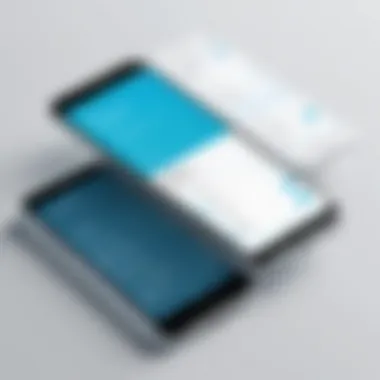
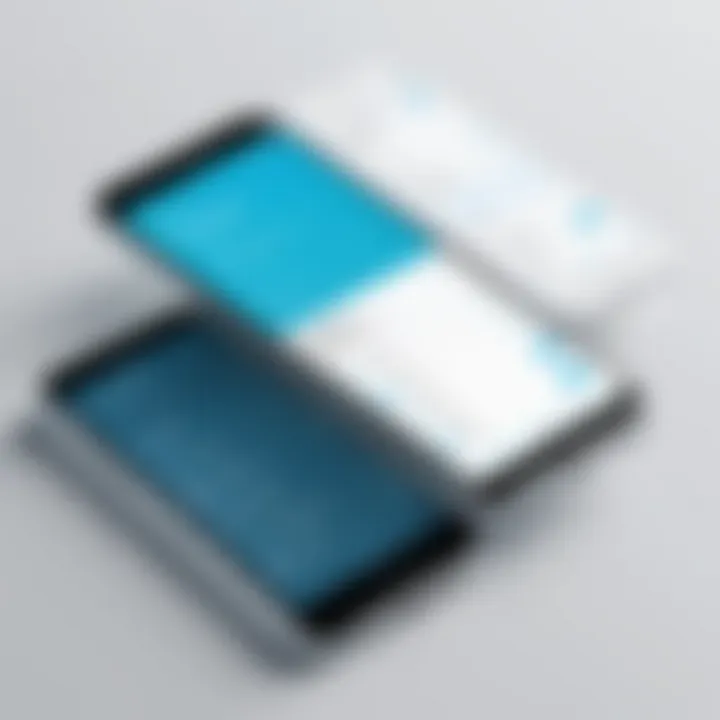
- Go to the Contacts app. Tap on "Groups" at the top left, then select "Hide All Contacts" to examine your list for duplicate entries.
- Additionally, some third-party apps, like Duplicate Contacts Fixer, can assist in automating the process.
- For any identified duplicates, you can merge contacts by selecting the duplicate entries in your Contacts app, tapping on "Edit," and then selecting "Link Contacts."
Maintaining a clean contact list will aid in effective communication. Regular checking for duplicates is beneficial for long-term management.
Ensuring Complete Transfer of Data
Ensuring that the full contact list has been properly transferred is essential. A loss of important information can lead to miscommunication.
- Cross-Verify Contacts:
- Check for Missing Information:
- Synchronize with Google Account:
- Begin by comparing the contact list on your Android device with the one on your iPhone. Make note of any missing contacts.
- It may prove helpful to export your Android contacts as a CSV file for a clear side-by-side comparison.
- Validate contact details, including email addresses, phone numbers, and associated notes. Any inconsistencies should be noted and corrected promptly.
- If you used a Google account for transfer, check settings and confirm syncing is enabled. These steps can provide a backup if data discrepancies occur in the future.
Ultimately, validating both the contacts and their data after a transfer reinforces the robustness of your communication network, allowing for smooth transitions in your digital life.
"Validation is not just a step; it’s a necessary action to ensure that your communication remains uninterrupted."
This comprehensive validation process supports effective contact management on your new device and offers peace of mind as you adapt to the changes.
Troubleshooting Common Issues
Transitioning your contacts from an Android device to an iPhone can be a complicated process. It's essential to acknowledge potential issues that may arise during this transfer. Troubleshooting common issues ensures that users can address problems swiftly, minimizing frustration and ensuring a smooth transition.
Understanding these problems is important for a seamless experience. By being aware of potential roadblocks, you can take proactive steps to avoid them. This section covers the most frequent issues and provides solutions that can help in overcoming these challenges.
Connection Problems
One of the most common hurdles during the contact transfer process is encountering connection problems. Poor connectivity can be due to various reasons. The most common cause is weak Wi-Fi signals or unstable connections. If you are using a cloud-based method, you should ensure that both devices are connected to a strong and stable network.
Consider checking the following:
- Router Issues: Restart your router to refresh the connection.
- Device Compatibility: Ensure that both the Android and iPhone are supported for the transferring method being used.
- Airplane Mode: Check if Airplane Mode is turned off on both devices.
When moving contacts via an app like Move to iOS or through Google Account, failures in establishing a connection can impede the process. If you continue to encounter issues, restarting both devices may resolve some unexpected glitches.
Tip: Ensuring that the software on both devices is updated can also help in preventing connection issues.
Data Loss During Transfer
Data loss during the contact transfer process can be distressing. When transferring, users can sometimes find that not all contacts are moved successfully. This can be due to various reasons, such as interruption during the transfer or insufficient storage on the iPhone.
To minimize the risk of data loss:
- Backup Contacts: Always create a backup of your contacts on your Android device before initiating the transfer. You can do this using Google Contacts or export them as a .vcf file.
- Check for Storage: Ensure that your iPhone has enough storage space available to accommodate new contacts.
- Follow Instructions Correctly: Adhere closely to the transfer instructions provided by the method you choose, be it manual methods, Google sync, or the Move to iOS app.
If data loss does occur, restoring from the backup can be a lifesaver. Regular backups and following steps correctly will ensure that you do not lose valuable information.
Long-term Solutions for Contact Management
Managing contacts effectively is crucial in today's mobile-centric world. Transitioning from an Android device to an iPhone involves more than just a one-time transfer of contacts. It requires a well-thought-out plan to maintain contact accuracy and availability in the long run. In this section, we will explore different strategies that can benefit users post-migration, ensuring that their contacts remain organized and up to date.
Utilizing Cloud Services for Future Transfers
Cloud services play a significant role in simplifying contact management. By leveraging tools like Google Drive, iCloud, or Microsoft OneDrive, users can maintain a centralized and accessible contact list. Here are some key benefits of using cloud services:
- Real-time Syncing: Changes made to contacts are updated across all devices instantly. This reduction of latency ensures you have the latest information wherever you are.
- Accessibility: Access your contacts from multiple devices. Whether you’re using a tablet, phone, or computer, cloud-based management allows consistent access.
- Backup Solutions: In case a device is lost or damaged, contacts stored in the cloud can easily be restored. This mitigates the risk of irreversible data loss.
To set this up, one can start by syncing their Google account with an Android device and then gracefully transition those contacts to an Apple ID for iCloud integration. Regularly encourage the practice of backing up contacts to these online services.
Maintaining Updated Contact Lists
Once users have successfully transferred their contacts, it's essential to ensure they remain current. Updating contact lists can mitigate potential confusion and reduce missed connections. Here are approaches to maintain accurate information:
- Regular Reviews: Schedule periodic checks of your contact list to remove duplicates and outdated information.
- Integration with Social Media: Link contact lists with platforms like Facebook or LinkedIn. This integration can automatically update contact info based on their social profiles.
- Utilizing Smart Features: Many smartphones come equipped with features that suggest updates based on interactions. Take advantage of such tools to keep contact details fresh.
"An updated contact list is not just a convenience; it’s a necessity for maintaining professional and personal relationships in a fast-paced digital world."



